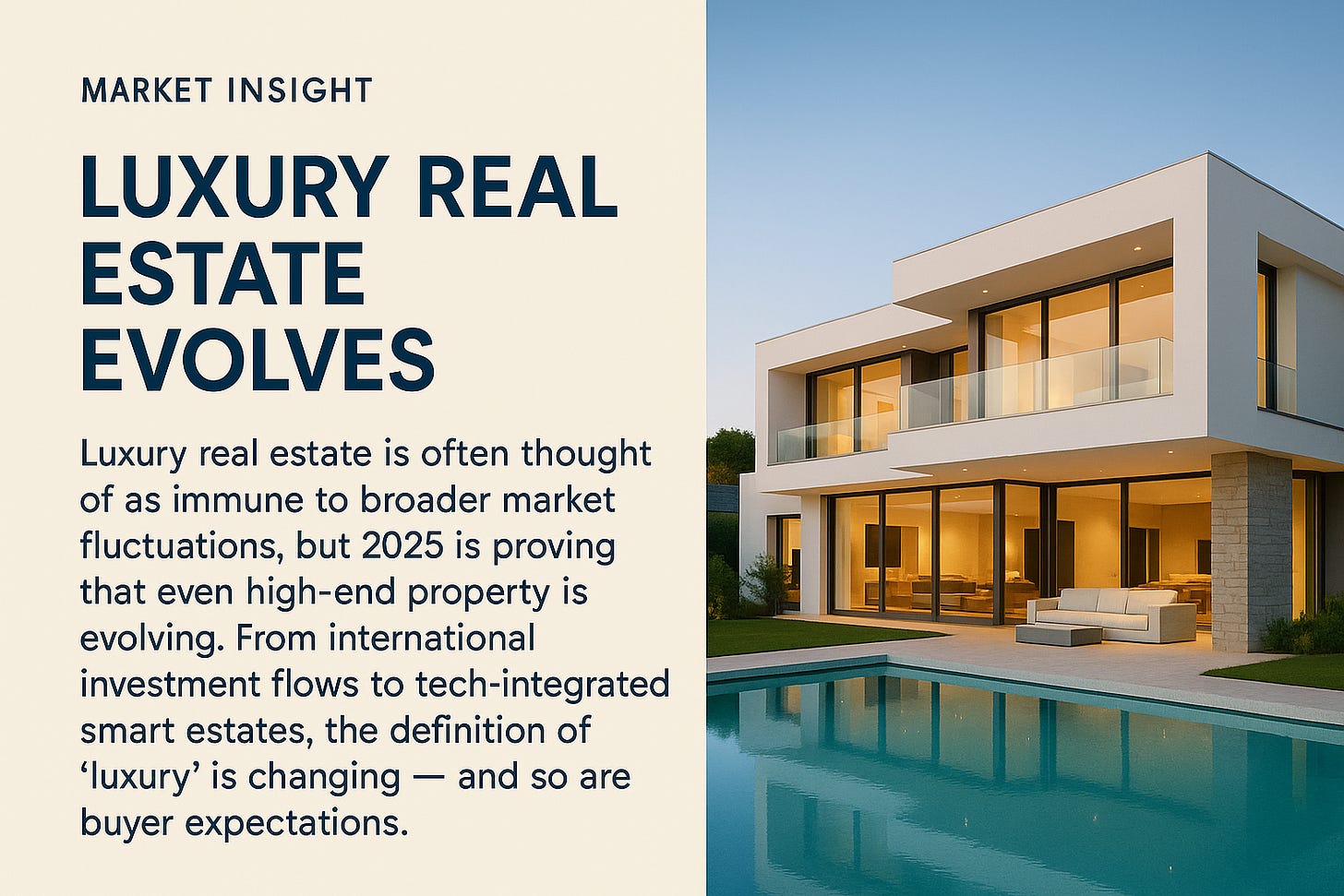Where High-End Property Is Headed
By Rafael Benavente
Luxury Real Estate Trends 2025: Where High-End Property Is Headed
Introduction
Luxury real estate is often thought of as immune to broader market fluctuations, but 2025 is proving that even high-end property is evolving. From international investment flows to tech-integrated smart estates, the definition of “luxury” is changing — and so are buyer expectations.
This article explores the key luxury real estate trends shaping 2025, what’s driving them, and how investors, developers, and buyers can position themselves in this competitive segment.
1. International Buyers Return in Force
Global wealth migration is fueling renewed demand for U.S. luxury properties.
Miami, New York, and Los Angeles remain top targets.
Middle Eastern and European buyers are seeking dollar-denominated assets.
Wealth preservation is a key driver amid geopolitical uncertainty.
Impact:
Sellers catering to foreign buyers should consider multilingual marketing and concierge-level service offerings.
“If you want to know how the wider real estate market is performing, see our Real Estate Market Trends 2025 analysis.”
2. Trophy Properties as Safe-Haven Assets
Ultra-high-net-worth individuals are increasingly viewing luxury real estate as a hedge.
Cash purchases dominate the $10M+ segment.
Limited supply in ultra-exclusive neighborhoods pushes prices higher.
Private islands, vineyard estates, and oceanfront compounds are in demand.
Impact:
Owning rare, one-of-a-kind assets is becoming as much about portfolio diversification as personal enjoyment.
3. Wellness-Oriented Design
Buyers are prioritizing health, comfort, and wellness.
In-home gyms, spa facilities, and meditation rooms are standard requests.
Air and water purification systems are increasingly common.
Outdoor living spaces with resort-style pools and kitchens are must-haves.
Impact:
Developers integrating wellness features early in design are commanding price premiums.
4. Tech-Integrated Smart Homes
Technology is now a cornerstone of the luxury experience.
AI-driven home automation for lighting, climate, and security.
Fully equipped remote workspaces with immersive conferencing capabilities.
Integrated solar and battery backup systems for energy resilience.
Impact:
Smart infrastructure is moving from “nice-to-have” to “non-negotiable” in the upper tier.
“Investors targeting high-growth regions should review our Real Estate Investment Strategies for 2025 article for actionable tactics.”
5. Sustainable Luxury
High-end buyers are aligning their values with their purchases.
LEED-certified mansions and eco-conscious estates are growing in demand.
Green roofs, reclaimed materials, and passive cooling designs are trending.
Luxury EV charging stations are a standard inclusion in new builds.
Impact:
Sustainability is now a status symbol — and a resale advantage.
6. The Rise of Ultra-Private Communities
Security, exclusivity, and amenities are driving demand for private enclaves.
Communities with private marinas, airstrips, and golf courses attract global elites.
Access control and on-site security teams are critical selling points.
Membership-based developments add prestige and privacy.
Impact:
Developers offering ultra-secure, amenity-rich environments are seeing record interest.
7. Experiential Amenities
Luxury living now extends beyond square footage and finishes.
Private art galleries, recording studios, and wine cellars are in demand.
Personalized service staff — chefs, sommeliers, wellness coaches — enhance appeal.
Some buyers request immersive entertainment rooms with cinema-quality setups.
Impact:
Luxury is increasingly defined by the lifestyle a property enables, not just its architecture.
8. International Second-Home Destinations
Wealthy buyers are expanding their portfolios to include high-end vacation properties.
Mediterranean coastal towns, Caribbean islands, and ski resorts are hot spots.
Dual-residency and citizenship-by-investment programs influence location choice.
Private jet access and proximity to luxury marinas are decisive factors.
Impact:
Agents with global networks are at an advantage when serving this clientele.
9. Off-Market Exclusivity
Privacy concerns have pushed more transactions off MLS.
Pocket listings and private broker networks dominate ultra-luxury deals.
This keeps competition low and buyer anonymity high.
Discretion is often valued as much as the property itself.
Impact:
Networking and relationship-building are key to accessing this segment.
10. Luxury Market Outlook 2025–2026
The segment is expected to remain resilient despite broader market shifts.
Limited supply in prime locations will support prices.
Technology and wellness trends will shape buyer expectations.
International demand will help offset any domestic slowdown.
Conclusion
The luxury real estate market in 2025 is being reshaped by a blend of global investment, technological sophistication, and lifestyle-driven features. For sellers and investors, success lies in anticipating the evolving definition of luxury and delivering properties that combine exclusivity, innovation, and personalized living.
By Rafael Benavente

